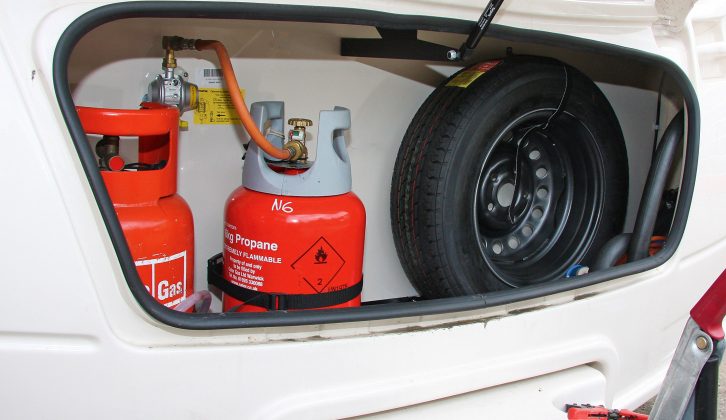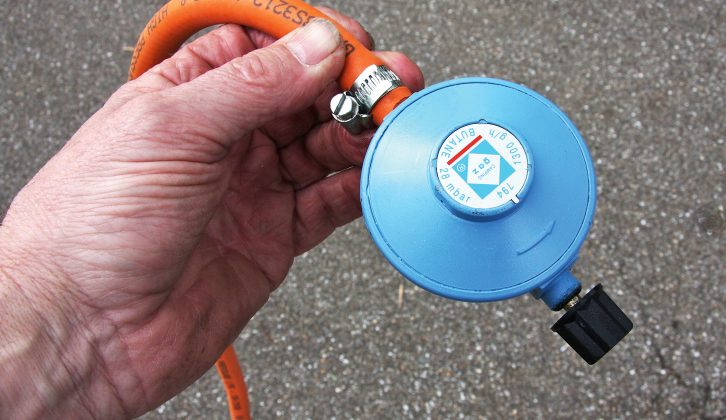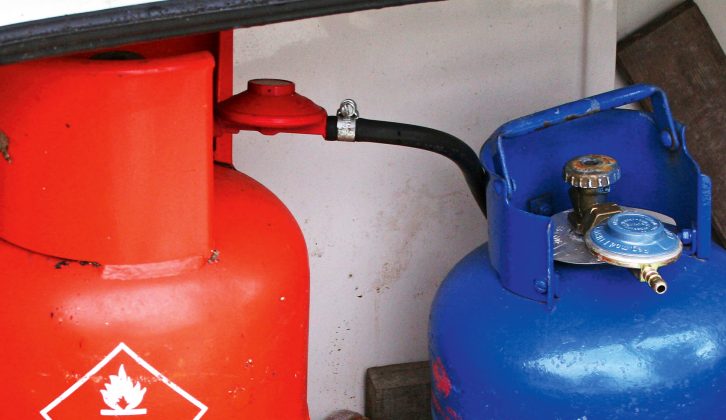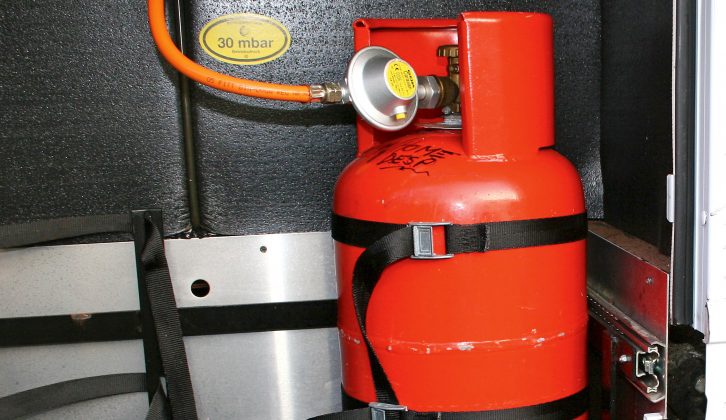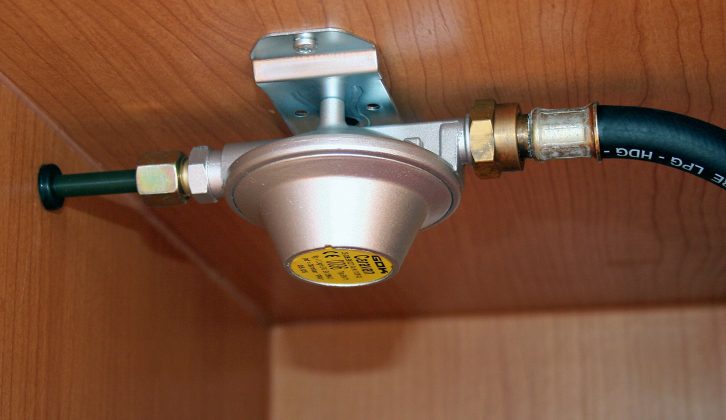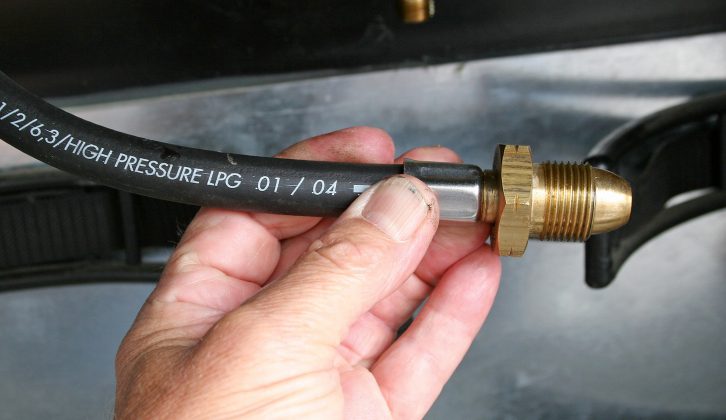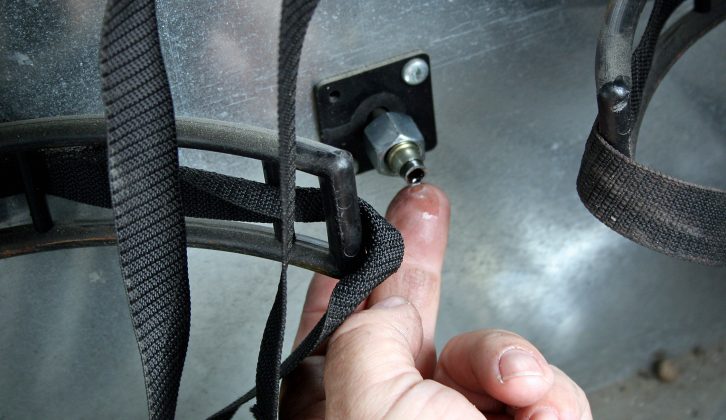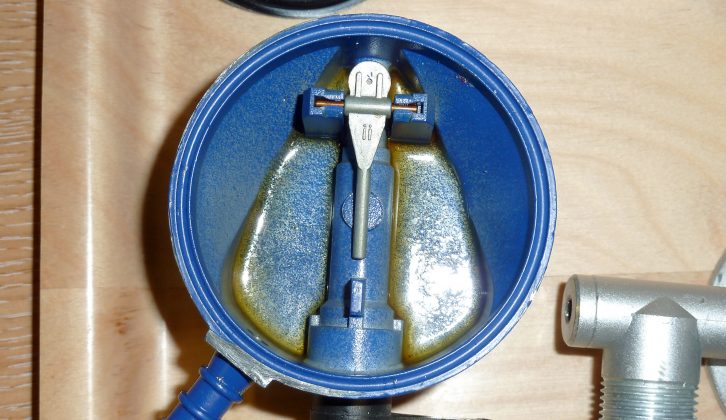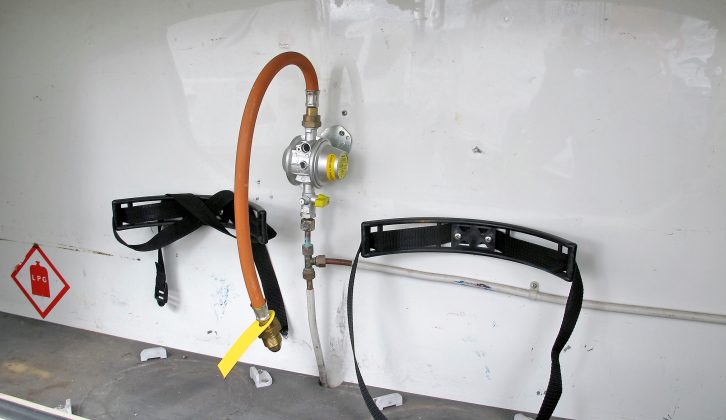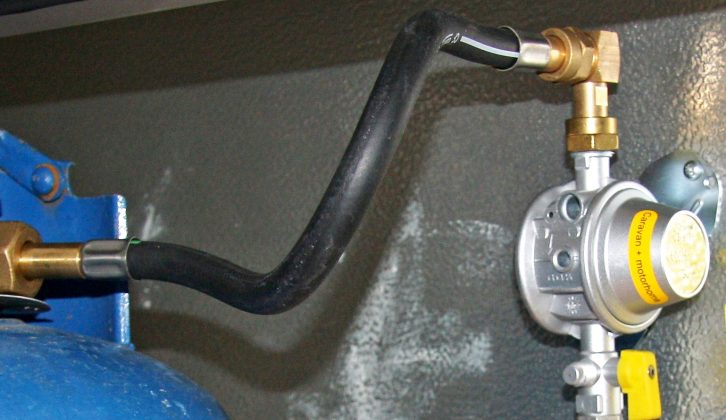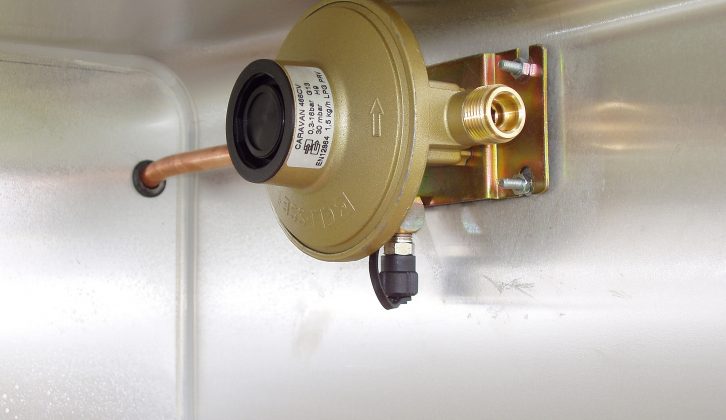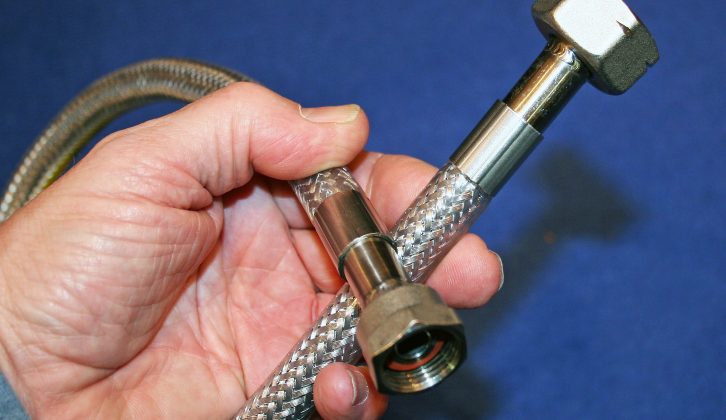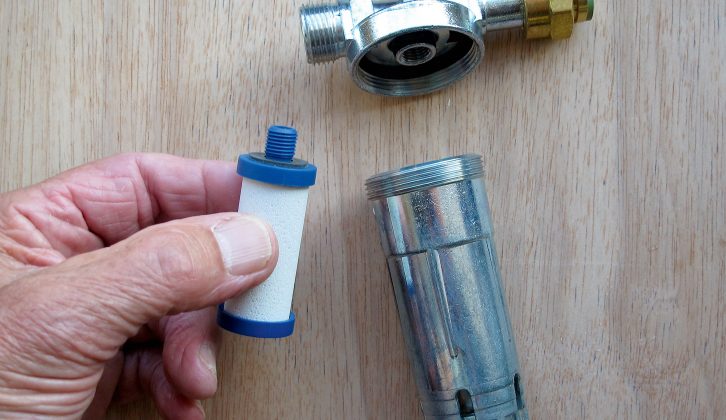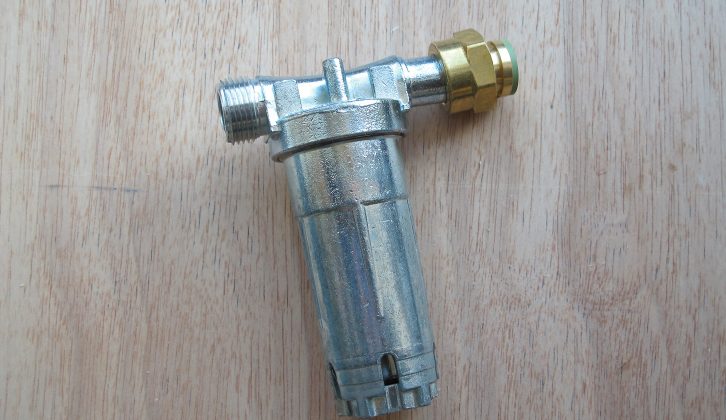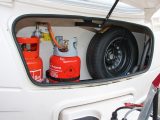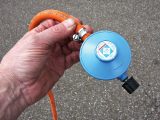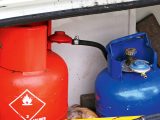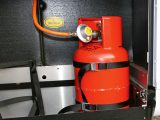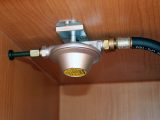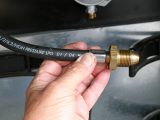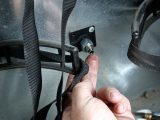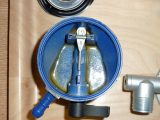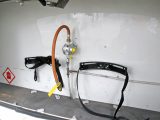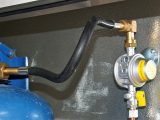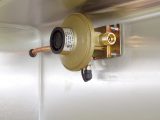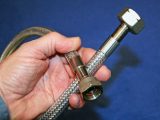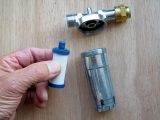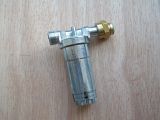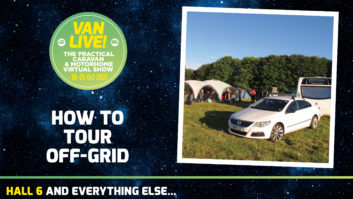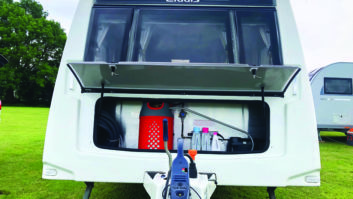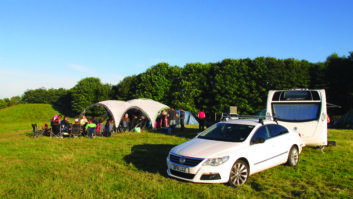Goodness me, it was cold. During a winter test in the Alps several years ago, my caravan’s gas heating system unexpectedly failed. Thank goodness I’d packed a small domestic 230V fan heater in my caravan as a back-up.
Later I discovered that the caravan’s gas supply had become blocked – and it is a problem that has been encountered by other caravanners, too.
Fortunately, these failures are unusual but, recognising that many readers own caravans built in the past 15 years, it is helpful to establish the cause of failures and to check remedial measures. Let’s begin by describing two generations of gas systems.
Pre-2004 caravans
Before September 2003, tourers constructed in the UK (and most of mainland Europe) were not supplied with a gas regulator.
In consequence, it was the purchaser’s responsibility to buy a regulator appropriate to the owner’s preferred type of gas (butane or propane) and to ensure that its coupling matched the cylinder.
As a rule, a blue (or occasionally green) 28mbar regulator is manufactured to accept the lower pressure of butane; a red 37mbar regulator is made to suit propane.
Since many pre-2004 caravans are still in use, these regulators are sold in camping accessory shops and priced at around £7.50. The trouble is that you may need to buy several regulators to match the different types of gas cylinder used at home and abroad.
When a regulator fits directly to a cylinder, the pressure of gas serving a caravan is reduced and regulated at source – namely the cylinder itself. Accordingly, the owner can then purchase some low-pressure flexible hose to link the regulator’s outlet with the caravan’s main supply pipe. In addition, the hose can be fastened securely using Jubilee-type hose clips.
This arrangement has now been superseded, but you should be aware of the following:
- When a regulator is cylinder-mounted, gas blockages are virtually unknown.
- Regulators are inexpensive and reliable, and the cost of replacing a low-pressure coupling hose during a routine service is modest.
- It’s a pity that there are so many types of couplings used on cylinders sold throughout Europe.
- The fact that caravanners often purchased an array of regulators was one compelling reason why the system needed to be changed.
Technical tip: don’t upgrade old vans
Some owners of older caravans have wanted to replace their gas supplies and regulation systems with products used on post-2003 models. However, for a number of technical reasons, this must not be done. Advisory literature published by Calor Gas and supported by the National Caravan Council (NCC) explains that this would affect appliance compatibility and could compromise safety.
Post-2004 caravan launches
Why change a system that works without problems? Well, it wasn’t perfect and among the many benefits of the revised arrangement is that a new type of dual-gas regulator that accepts both butane and propane has been introduced.
Dual-gas regulators that can be mounted directly to certain types of gas cylinders were manufactured and often fitted to German-made caravans.
In the UK, however, it was considered far better for a caravan manufacturer to mount such regulators on the wall (or sometimes the ceiling) of the gas locker. This meant that the owner merely had to purchase a high-pressure coupling hose to link the fixed regulator with his or her choice of gas cylinder.
This updated system has several advantages, especially if you go on holiday abroad for extended periods. For instance, some UK types of cylinder (such as Calor Gas) are not available outside this country. However, with the revised system, you can now purchase a cylinder used in the country you are visiting and only need to buy a high-pressure coupling hose to suit its specific coupling.
Technical tip on high pressure hose couplings
Although gas cylinders have many types of connections, wall-mounted regulators manufactured by Reca, Clesse and GOK (supplied by Truma) all have standardised inlets to accept high-pressure hose couplings.
Notwithstanding the benefits of a wall-mounted regulator, bear in mind that its flexible coupling hose has to deal with high-pressure gas coming from the cylinder. For that reason, you must not use low-pressure hoses or clips that are designed to be used with cylinder-mounted regulators. Instead, you have to purchase a purpose-made high-pressure coupling hose that includes factory-fastened connectors.
Without question, wall-mounted 30mbar regulators that accept either butane or propane are a welcome alternative to the traditional cylinder-mounted products. Moreover, a fixed regulator now forms part of a caravan and is therefore subjected to a periodic check when a van is serviced.
So it was no surprise when all caravans approved by the National Caravan Council (NCC) were required to have this revised arrangement fitted on 2004 and subsequent models – all models launched since 1 September 2003.
There are clearly benefits, but no one could anticipate the problems that followed.
Why gas doesn’t flow
In all probability, the majority of our readers own a caravan that is fitted with a permanently mounted regulator. You can also be certain that the majority of owners will never experience faults with the system. That is, except for one with which I have had experience: gas blockage.
Shortly after the introduction of wall-mounted regulators, service specialists reported that ‘an oily liquid’ was sometimes discovered in the gas supply pipes. This mysterious liquid also found its way into regulators, some of which had to be replaced. Not surprisingly, it was also believed that this liquid was probably the cause of gas starvation and the failure of certain appliances.
In the period that followed, fingers were pointed in several directions. Some specialists blamed the gas itself, others blamed the regulators. However, factual evidence was crucial and laboratory experiments were conducted in order to find cures for the problem.
From the outset, it was also recognised that if a caravan is not in current use and its owner has neglected to close the supply valve on the cylinder, gas will remain in the flexible coupling hose. It was also found that, under certain conditions, condensation could form in the hose as well.
Further analysis showed that the plasticiser compound used to maintain the flexibility of a ‘composite rubberised’ coupling hose sometimes gets absorbed by the condensation deposits. That seemed to account for the presence of this ‘oily liquid’, although others still wonder whether liquefied petroleum gas (LPG) might yield impurities, too. Either way, the problem never seemed to occur in the low-pressure hose used on older caravans fitted with cylinder-mounted regulators. That was one of the anomalies.
Let’s consider precautions and cures for gas blockages.
Cure for gas blockages
In January 2007, the NCC published a statement and I reported on some of its proposals in the fourth edition of The Caravan Manual (Haynes Publishing).
“If a regulator is mounted lower than the outlet from a gas cylinder, the slope on a connecting gas hose makes it easier for condensation accumulating inside to discharge into the regulator through gravity and to upset its operation. Any looping downturn in a hose can also act as a collecting point for residual moisture.”
This observation then led to advice that a dealer could improve the gas system by remounting a regulator higher up in the gas locker. This would allow condensation forming in the hose to flow into the cylinder instead of into the regulator.
Alternatively, some dealers have fitted an extension pipe and elbow above a regulator in order to elevate the high point on a connecting hose.
Incidentally, if you own a post-2003 Avondale, you are likely to have a Clesse regulator mounted right at the top of the gas locker. This arrangement creates a good downward slope on a connecting hose and claims have been made that gas starvation is virtually unknown in such installations.
Technical tip: don’t DIY with gas
Under no circumstances should unqualified owners attempt to make alterations or modifications to the gas systems on their caravans. This should be undertaken only by a qualified gas engineer with experience of LPG in leisure vehicles. Your dealer can advise and help in this matter.
Another strategy is to dispense with conventional coupling hoses made with a composite rubber compound and to fit stainless-steel flexible pipes instead. They cost more than the hoses, but those supplied by Gaslow reportedly do not need replacing for 20 years. They do not contain the plasticiser that laboratory analysis has found when rubberised compound hoses had been fitted.
Fitting a Truma gas filter may help further in preventing blockages. It does so by intercepting unwanted liquids and contaminants in its replaceable cartridge. The product is installed in the supply pipe before it connects to the regulator. Brackets and angled connector pipes are available to be used with the unit and a dealer can usually install the filter in well under an hour.
Once fitted, it is simple to remove the collecting vessel whenever liquid is sighted in the inspection points at the bottom. Equally, removing the housing yields access to the cartridge which can be unscrewed by hand for periodic replacement. The details are provided in the instruction booklet.
Gas safety checks are essential
As the NCC stated when the problems arose in post-2003 installations, these difficulties were entirely unexpected and no one was at fault for the failures that occurred.
It also appears that new caravans seldom experience gas supply problems and the few unfortunate experiences have to be kept in perspective.
On the other hand, it is appropriate to inform caravanners about these matters and to reaffirm the importance of regular servicing, which includes gas safety checks. Equally, if you are planning to purchase one of the early models fitted with a wall-mounted regulator, you may want to discuss the modifications mentioned here with a dealer. As I found to my cost, when the heater packs up, trips to ski slopes are really not much fun.
While we are discussing gas safety, please see Practical Caravan’s news report Calor recalls gas cylinders. In September 2014 Calor recalled 6kg CalorLite gas cylinders (made from 2008 to 2011) for modifications. If the shiny tare disc has been punched, then it means your cylinder has already been recalled, tested, and pronounced safe.
A dealer could improve the gas system by remounting a regulator higher up in the gas locker
